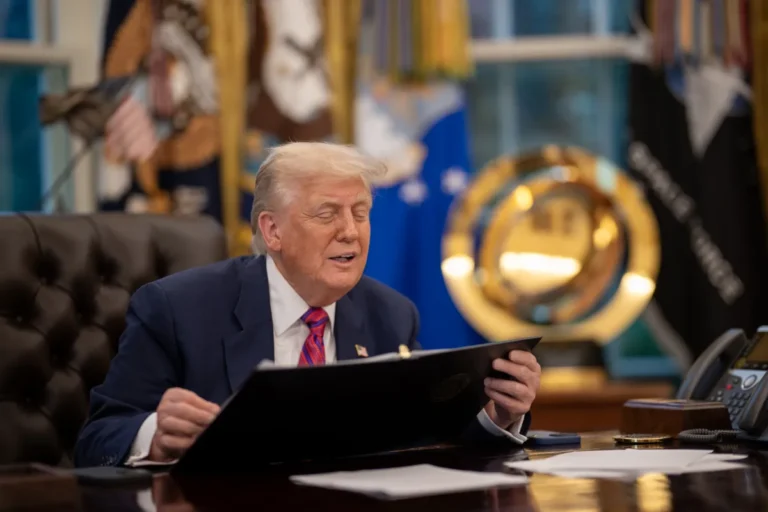Trump Targets Cashless Bail and Flag Burning in Latest Executive Orders
As part of a broader law-and-order initiative, President Trump is taking significant steps to reform cashless bail systems and address flag burning across the United States. This move comes amid escalating discussions about law enforcement strategies in American cities.
Focus on Cashless Bail Policies
During a recent address in the Oval Office, Trump expressed his ambition to replicate the crime reduction successes seen in Washington, D.C., in other urban areas. To that end, he signed three critical executive orders aimed at counteracting existing cashless bail policies.
Details of the Executive Orders
-
Cashless Bail in Washington, D.C.
- The first order specifically targets the District of Columbia’s cashless bail policies, which have been implemented since the 1990s. The directive mandates federal officials to work with local authorities to ensure that defendants considered a threat to public safety are detained fully under applicable laws.
- The executive order emphasizes the need for federal charges and pretrial detention, stating, “Defendants shall be held in Federal custody to the fullest extent permissible.”
-
Nationwide Approach to Cashless Bail
- The second order extends the focus to cities and states nationwide that have adopted cashless bail reforms. Trump’s administration asserts: “Federal policies and resources should not support jurisdictions with cashless bail policies.”
- Attorney General Pam Bondi is instructed to report back to the White House within 30 days with a list of jurisdictions that have significantly reduced cash bail, particularly for serious offenses like violent crimes or vandalism.
- Consequences for Non-Compliance
- The Office of Management and Budget (OMB) will oversee the enforcement of these orders, which could involve adjustments to federal funding and support for those jurisdictions.
Implications for Flag Burning
In addition to addressing cashless bail, Trump’s executive actions also target the act of flag burning, which has stirred controversy and legal debate.
-
Legal Context:
- The president aims to reframe flag burning as an incitement to civil unrest. His rhetoric suggests that burning the American flag “incites riots,” which could involve legal repercussions as part of broader prosecutorial strategies.
- Executive Action Details:
- The executive order states that acts of flag burning should be considered aggravating factors in prosecuting various offenses, including violent and hate crimes.
Historical Background
It’s significant to note that flag burning has been established as a protected form of free speech by the Supreme Court in the landmark 1989 decision. Trump has openly criticized this legal precedent, attributing it to a “very sad court.”
Conclusion
President Trump’s initiatives to reform cashless bail and prosecute flag burning reflect a strong stance on law and order issues. As these executive orders unfold, the implications for public safety and civil liberties will continue to dominate national discussions. For more insights on public safety policies and their implications, consider reading more from sources such as Vox and The New York Times.
Ultimately, this initiative represents a significant shift in strategies aimed at tackling crime, emphasizing federal oversight and regulation in local jurisdictions. As the administration rolls out these measures, the effectiveness and legal challenges that may arise will be closely monitored.


